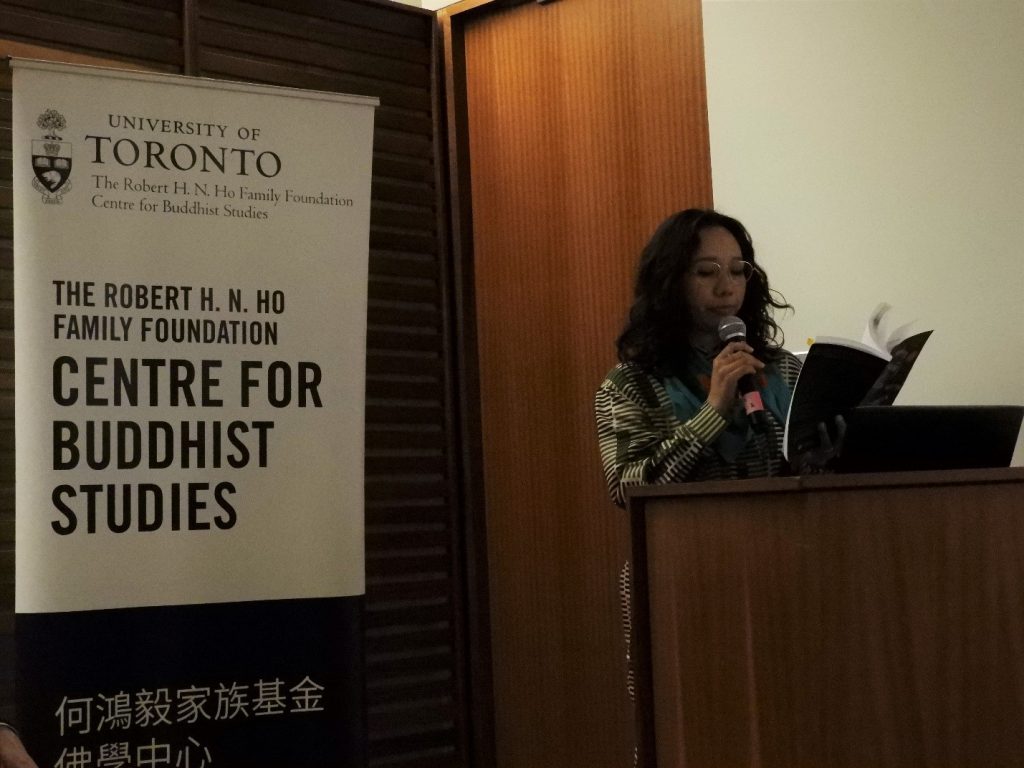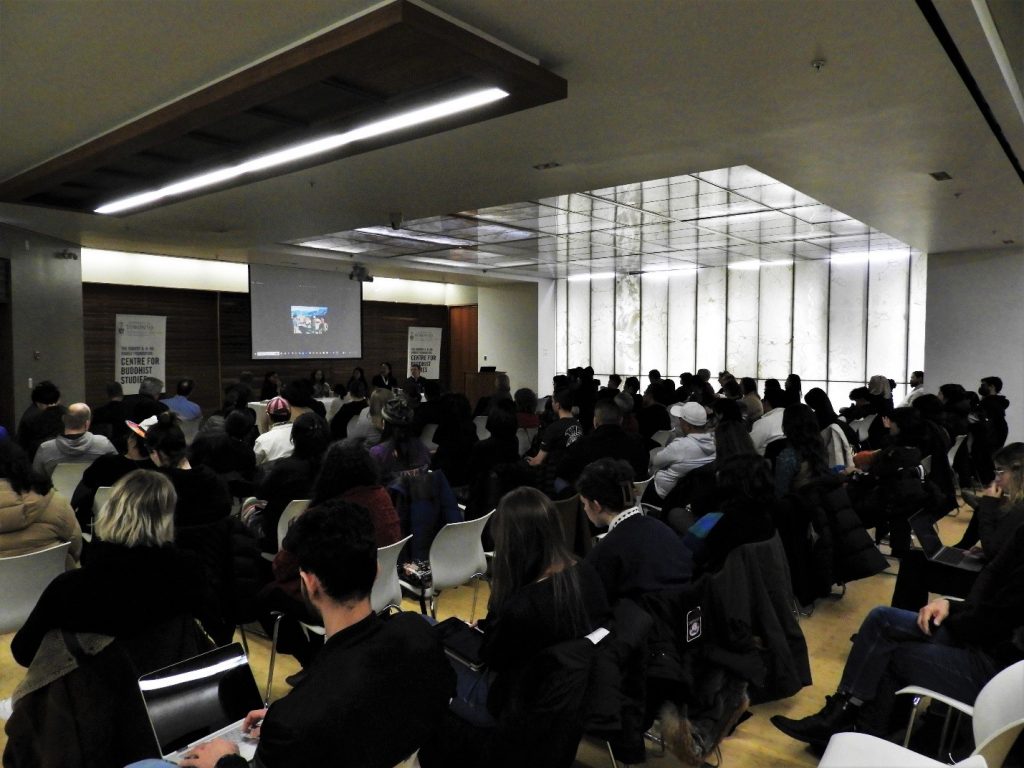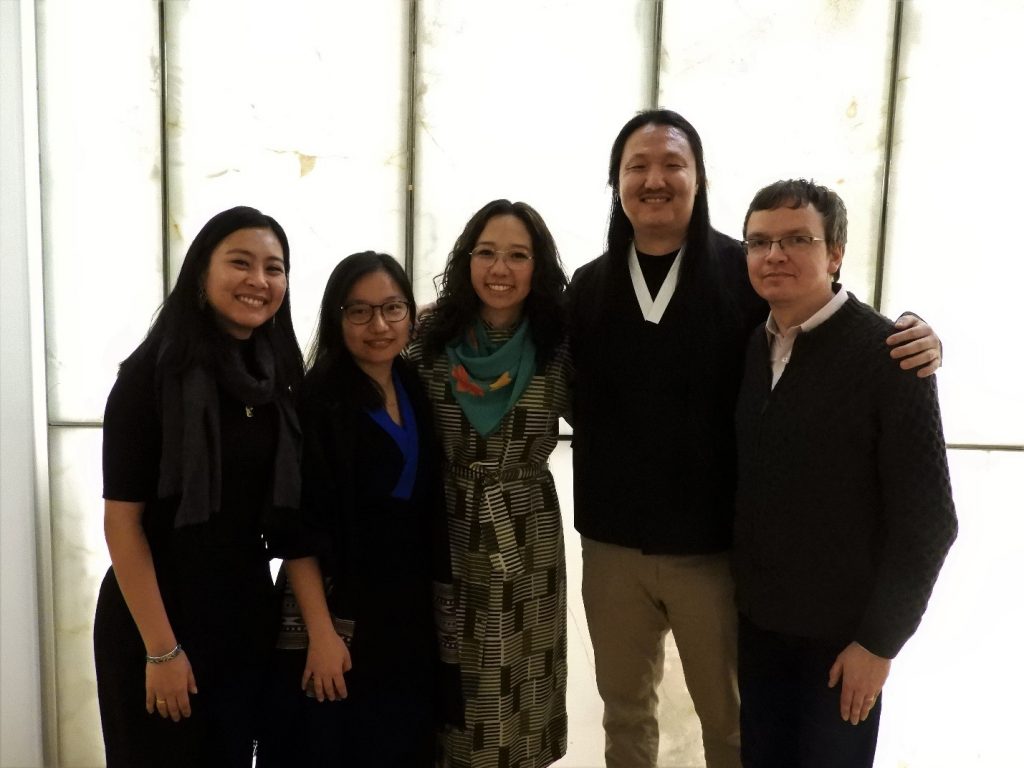We are delighted to repost this lovely report that Ian Turner wrote for the Canadian Journal of Buddhist Studies News Blog about the Buddhism & the Body Symposium that we co-sponsored with the Dept. for the Study of Religion in April 2024. Follow the link to read more.
Winter Semester 2023 Roundup
Buddhism & Posthumanism Conversation Series 2022–2023

This academic year, the Ho Centre for Buddhist Studies continued its popular conversation series on Buddhism & Posthumanism for a second year.
Mariangela Carpinteri (PhD student in Religious Studies at the University of California, Santa Barbara), “Green Buddhism: The Birth and Development of Environmental Buddhism”
In October, Mariangela Carpinteri joined us to present her research on “Green Buddhism,” the unofficial denomination of a contemporary and environmentally focused form of Buddhism that developed in the United States starting in the 1950s. The story of Green Buddhism runs parallel to the emergence of ecology and environmentalism, pacifist movements, the artistic revolution of the Beats, the hippie movement, and the analysis of the human psyche in relation to nature. In addition, Mariangela linked this movement to the emergence of a Japanese version of Green Buddhism through the creation of green burials and various forms of activism in the Pure Land schools and Shugendō. She argues that both forms of Green Buddhism indicate the adaptability of Buddhism to particular social, geographical, and ecological contexts, and that far from being a superficial adaptation of Buddhism to Western ideals, Green Buddhism is a concrete example of the evolution of Buddhism in history and, more generally, of the role of religion in the contemporary world.
Alice Millington (PhD student in Geography and Social Anthropology at the University of Cambridge), “Mythical Beasts and Changing Climates: The Fulfilment of Buddhist Prophecies of Decline in Far-Eastern Nepal”
In January, Alice Millington joined us to explain how Tibetan Buddhist communities in the Eastern Himalayas explain the climate changes they have witnessed, and in particular, the role of spiritual non-humans (particularly local deities and mythical animals) as actors in meteorological events. Based on ethnographic fieldwork in Nepal’s Taplejung District, Alice described how the Tibetan Buddhist community of Walung (Olangchung Gola) explains the consequences of climate change in terms of the dawning of a degenerate time (kawa nyampa), which is marked by the expulsion of magical and mythical animals such as the yeti, and the anger of the mystical snow frog, which unleashes its fury through swollen rivers and treacherous landslides. These signals not only tell stories of environmental risk, but the disenchantment of a sacred landscape.
Saskia Abrahms-Kavunenko (Research Fellow in the Center for Contemporary Buddhist Studies at the University of Copenhagen), Polyester Blessings: The Persistent Incarnation of Purity in Contemporary Mongolia
In February, Saskia Abrahms-Kavunenko joined us to examine the intersections between Buddhism, capitalism and environmentalism in Inner Asia. Observing that in the pre-socialist period (before 1921) in Mongolia prayer scarves were expensive and made of silk, Saskia argues that the proliferation of polyester prayer scarves in recent times indicates the degree to which modern rituals are being impacted by global capitalism. Since religious items today are often mass produced, cheap, and made from materials which cannot reintegrate into ecological systems, Saskia argues that their lingering presence in Inner Asian landscapes are a problematic and unintended consequence that can impact ecological systems in the area.
An Evening with Tsering Yangzom Lama
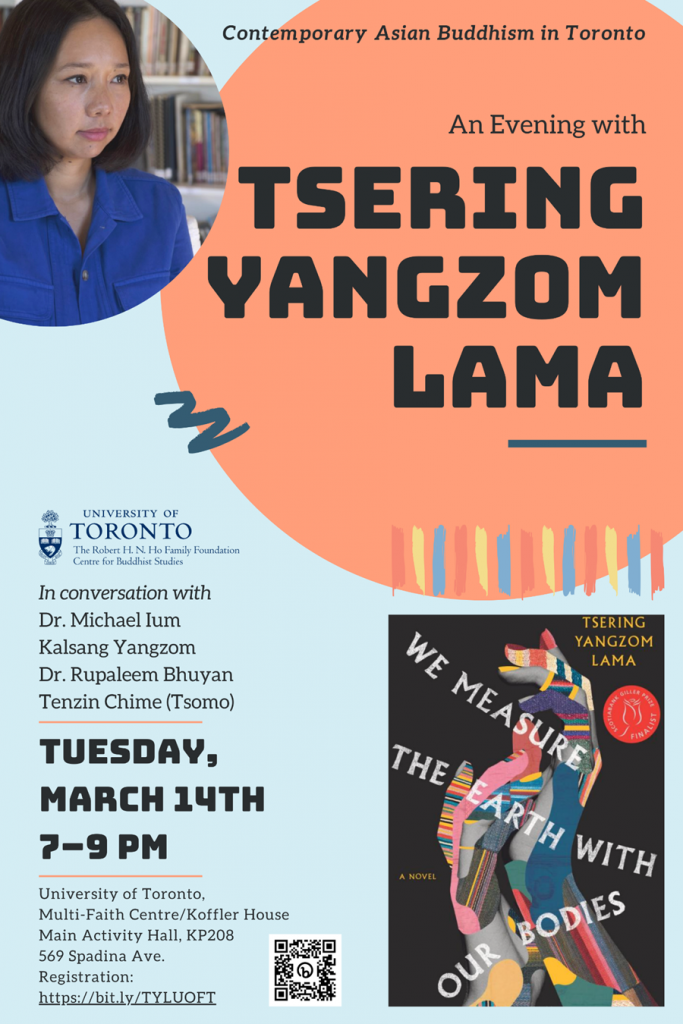
In March, we were thrilled to host the Tibetan-Canadian author and activist Tsering Yangzom Lama. Nourished by tea and Tibetan dumplings (momo) from a restaurant in Little Tibet, a packed house enjoyed a reading, panel discussion, audience Q and A, and book signing at the campus’ Multi-Faith Centre. Tsering’s book is deeply personal, written as a reflection on the experience of Tibetans today. It was written in English to reflect the current Tibetan exile experience, mirrored by Tsering’s own lack of confidence in her Tibetan proficiency. It was also inspired by the experiences of Tibetans living in refugee camps in Nepal, or those who have fled to new lands such as Canada attempting to make a new home.
The novel largely revolves around the perspectives of three Tibetan women, born out of a desire to emphasize the oft neglected perspectives of Tibetan women, as well as the diversity of the Tibetan experience. Members of the panel were also chosen to reflect this diversity. Kalsang Yangzom interrogated the category of anglophone literature, observing that the appearance of anglophone Tibetan literature indicates the complex and multifaceted nature of Tibetan identity today. Dr. Rupaleem Bhuyan (Factor-Inwentash Faculty of Social Work) and Tsomo (Tibetan Women’s Association of Ontario) shared findings from their research project into migrant communities in Toronto. For Tsomo, the experience of reading this book was deeply affecting, as she shared that she knows people in real life who are just like the characters, and that every Tibetan family has experienced the precarity, the poverty, and the personal tragedies contained in the book.
Given the sponsorship of the Department for the Study of Religion’s committee on Anti-Racism, Decolonization, and Equity, I also took the opportunity to ask Tsering to share some typical Tibetan perspectives on the academic study of Tibet. Her response was simply that Tibetan Studies is “by white people and for white people,” so ordinary Tibetans don’t pay it much attention. However, she shared that she is heartened by the growing numbers of Tibetans in graduate programs in Tibetan Studies, and that she appreciates the work done by scholars who are allies of the Tibetan people.
U of T/McMaster University Yehan Numata Program in Buddhist Studies
This semester witnessed the return of the Yehan Numata Program in Buddhist Studies after a pandemic-related hiatus. For my part, the return of this lecture series was a valuable opportunity to network with peers from across the Buddhist Studies world, learn from their expertise, and chat in an informal and relaxed environment.
The first speaker was Uranchimeg (Orna) Tsultem (Indiana University), who presented a paper entitled “Performativity and Imagination in Mongolian Buddhist Art.” In this talk, Orna argued that certain Mongolian paintings are not subservient to texts, but themselves act as important primary sources of Buddhist practice. In doing so, they possess a performative agency that structures the participatory acts of their viewers and shapes their modes of seeing to form their sense of belonging and unity as a community.

The second guest was Mark Allon (University of Sydney), who offered a reading group titled “An Introduction to Reading Gandhari Manuscripts.” For this event, Mark shared with us some of the challenges in reading Gandhari manuscripts, as well as some of the latest technology used to scan and share manuscripts online. Of particular note to me was learning that the phrase arapacana—both the name of a form of Mañjuśrī and a phrase found in Mañjuśrī’s mantra—is actually the name (and the first letters of) the syllabary of Gandhari!

The third guest was April Hughes (Boston University), who presented a paper titled “Worldly Saviors, Terrestrial Utopias, and Imperial Authority in Medieival Chinese Buddhism.” In this talk, April examined the association between Wu Zhao of Great Zhou (Empress Wu Zetian) and Maitreya Buddha in a commentary on the Scripture of the Great Cloud (Dayun jing 大雲經, T. no. 387) presented to the throne in 690 just prior to her being declared emperor. In particular, she argued that this commentary associates Wu Zhao with this particular depiction of Maitreya, thus depicting her as both worldly savior and religious figure.

Talks by HCBS Students
This semester also witnessed a series of special talks given by HCBS students around campus.
In March, Rachelle Saruya (Postdoctoral Fellow in the Department of Historical Studies, University of Toronto Missisauga) presented a paper as part of the Pathbreakers: New Postdoctoral Research on South Asia at U of T series, sponsored by the Munk School of Global Affairs & Public Policy’s Asian Institute and Centre for South Asian Studies, and co-sponsored by the Asian Institute’s Southeast Asia Seminar Series. In her talk—titled “Nun-Making: Myanmar Buddhist Nuns’ Educational Practices and Rituals in Training”—Rachelle discussed her research on Myanmar Buddhist nuns’ formal and informal education, based on her ethnographic research at one nunnery in Sagaing, Myanmar. In particular, her research touches on themes of secular vs. monastic education, child nuns vs. older ones, disability and minority status, reformed nunneries vs. old institutions, and lineages, among other matters.
Also in March, Anthony Scott (Postdoctoral Fellow, Department of Political Science) also presented a paper as part of the Pathbreakers: New Postdoctoral Research on South Asia at U of T series, sponsored by the Munk School of Global Affairs & Public Policy’s Asian Institute and Centre for South Asian Studies, and co-sponsored by the Asian Institute’s Southeast Asia Seminar Series. In his talk—titled “Exposing Enlightenment: The ‘Living Arahant’ in Photography and Print in Post-colonial Burma”—Tony focused on the “living arahants” of early twentieth-century Burma, examining how the narratives surrounding this supposedly enlightened class were negotiated and contested in the public sphere through the mediums of photography and print. By exploring the figure of the Mingun Jetavana Sayadaw (1868-1955), a Burmese scholar-monk and pioneer of insight, or vipassanā meditation, he argued that the application of these categories is not just a religious act, but profoundly political—determining who wields the power of definition itself.
Lastly, in April, Amber Moore (Doctoral Candidate) presented as part of the New College Senior Doctoral Fellow Speakers Series. In her talk—titled “Between Literary Worlds: Translation as commentary in the study of Newar Buddhist narratives”—Amber discussed her recent research into the origin story of the Buddhist Goddess Vajrayoginī found in the Maniśailamahāvadāna, a compilation of various narratives, māhātmyas and avadānas now only found in a few remaining manuscripts in Nepal.
Sarah Richardson’s Tibetan Murals exhibitions
This winter, Dr. Sarah Richardson hosted several groups for viewings of Thomas Laird’s special published collection of Tibetan murals. This is a special large format book that contains high resolution (and even some true to scale) reproduction photographs of historic Tibetan mural paintings drawn from temples in Tibet, including some of Tibet’s most famous art historical temple sites like the 12th century temple of Drathang, the 14th century temple of Shalu, the 15th century Gyantse Kumbum, and the 17th century Potala. Since these places are often inaccessible to visitors, and in particular, to Tibetans outside of Tibet, this book offers a rare and important point of access to view these incredibly beautiful historic remains. Dr. Richardson is interested in facilitating more learning opportunities for students of Tibetan language, history and religion, focused on this book.

Graduating Students!
Last but not least, we would like to acknowledge and congratulate our graduate students who have completed degrees this year.

Jade Hui: Under the supervision of Amanda Goodman, Jade completed their Master of Arts degree this year. Their thesis is entitled “How Might the Buddha and Buddhists Guide a Psychotic Queer?”

Annie Heckman: Under the co-supervision of Amanda Goodman and Shayne Clarke, Annie Heckman completed her Doctor of Philosophy degree this year. Pamela Klassen also served on her committee. Her dissertation is entitled “Reassembling Discipline: Bu ston Rin chen grub’s Collection of Incidents Involving Nuns from the Vinaya (’Dul ba dge slong ma’i gleng ’bum).

Rachelle Saruya: Under the supervision of Christoph Emmrich, Rachelle Saruya completed her Doctor of Philosophy degree this year. Also on her committee were Hiroko Kawanami and Valentina Napolitano. Her dissertation is entitled “Towards the Noble Royal Flower: Educational Practices and Rituals in Training.”

Tony Scott: Under the supervision of Christoph Emmrich, Tony Scott completed his Doctor of Philosophy degree this year. Also on his committee were Srilata Raman and Alicia Turner. His dissertation is entitled “The Politics of Commentary: The Mingun Jetavana Sayadaw’s Milindapañhā-aṭṭhakathā in Mid-twentieth-century Burma.”

Khenpo Kunga Sherab: Under the supervision of Frances Garrett, Kunga Sherab completed his Doctor of Philosophy degree this year. Also on his committee were Amanda Goodman and Christoph Emmrich. His dissertation is entitled “Incarnation on the Roof of the World: A History of Practices to Identify Trülku (sprul sku) in Tibetan Buddhism.”
Congratulations to all graduates and their faculty supervisors and committee members. Our best wishes for your future success! Emaho!
Fall Semester 2022 Roundup
After a few years of remote events due to the pandemic, the Ho Centre for Buddhist Studies was happy to return to a vibrant schedule of in-person, hybrid, and online events this Fall semester.
Michael Ium, Pathbreakers: New Postdoctoral Research on South Asia at U of T
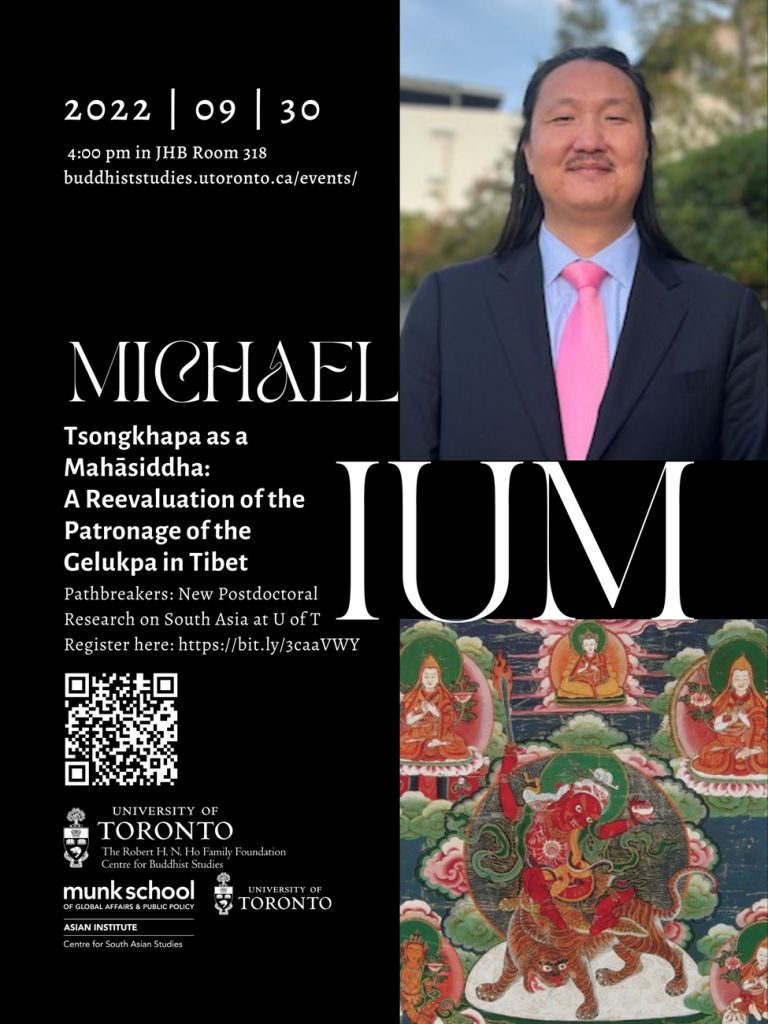
In September, our new postdoctoral fellow Michael Ium presented a paper for the “Pathbreakers: New Postdoctoral Research on South Asia at U of T” series, co-sponsored by the Ho Centre and the Munk School of Global Affairs & Public Policy’s Asian Institute and Centre for South Asian Studies. The event was chaired by Christoph Emmrich with Rory Lindsay serving as discussant.
Michael’s paper offers a reevaluation of the early patronage of the Geluk tradition in Tibet in the fifteenth century, arguing that the influential Tibetan figure Tsongkhapa’s (1357-1419) status as a mahāsiddha or “great adept” of Buddhist Tantra was a primary (and thus far, overlooked) factor in his tradition’s gaining patronage from the political elites of the Tibetan Pakmodrupa Dynasty. Unfortunately, media from this event is not available, but a journal article on this topic has been published in the 45th volume of the Journal of the International Association of Buddhist Studies (2022). https://poj.peeters-leuven.be/content.php?url=issue&journal_code=JIABS&issue=0&vol=45
Himalayan Studies Conference

In October, the 6th Himalayan Studies Conference was organized and hosted by the University of Toronto on behalf of the Association for Nepal and Himalayan Studies (ANHS). Members of the U of T Conference Organization Team included HCBS faculty Christoph Emmrich, Frances Garrett, and Sarah Richardson. The conference was a great success, bringing together over a hundred panelists spread over eight sessions and three days.
Preceding the opening of the conference, Sarah Richardson organized an outing for attendees to see Tibetan art currently housed at the Royal Ontario Museum. This was a rare chance to see pieces that have not yet been displayed publicly, and which are in storage awaiting conservation, research, and future display. Collections Technicians Gwen Adams and Vitor Pavao hosted and answered questions about the collection’s history and current care practices.

The conference programming showcased the diversity of current research in Himalayan Studies. Some studies focused on religion, with Christoph Emmrich sharing a paper on Newar menstrual rites for the panel “Controversies on Sacred and Impure Blood.” Others focused on issues of language, with Christoph Emmrich also sharing a paper on The Newar Online Dictionary Project—a collaborative SSHRC-sponsored project based at the University of Toronto and partnering with a team from the University of Virginia—that aims to provide an online Newar dictionary that is more accessible and comprehensive.
Others focused on issues of culture, such as the panel “Religion and Culture II: Environment and Sacred Geographies” chaired by Frances Garrett. Two presenters, Jenny Bentley (University of Zurich) and Minket Lepcha (Filmmaker), shared a paper describing the workshop and mentorship program they organized for the Lepcha community in the Sikkim and Darjeeling Hills, a program supported by the “Himalayan Borderland” project under Frances Garrett. The particular aim of this project was aiding indigenous Lepcha youth to reclaim their ancestral heritage, narratives, and knowledge systems in the contemporary world.
Elsewhere, Sarah Richardson was busy chairing two panels, “Representing Himalayan Pasts and Futures through Art and Literature” and another convened to honour the legacy of John C. Huntington (1937-2021), Professor of Art History at The Ohio State University. As one of his former students, Sarah Richardson shared a paper reflecting on her first Buddhist Art course as a new MA student in Art History with Prof. Huntington, an experience that was formative and continues to shape her own research and teaching to this day.

Lastly, one of the highlights of this conference was the inaugural meeting of the Canadian Himalaya Initiative, a project aiming to facilitate greater networking and collaboration among scholars working on diverse aspects of the Himalayan region in Canada. Members gathered to introduce themselves, get to know one another, and brainstorm together, followed by a hearty dinner and social outing.
Dr. Matthew King, A Book Talk for In the Forest of the Blind: The Eurasian Journey of Faxian’s Record of Buddhist Kingdoms
The last major event in Fall Semester was a book talk by Dr. Matt King, alumni of the DSR and now Director of Asian Studies and Associate Professor of Buddhist Studies at the University of California, Riverside. This talk was well-attended both in person and online, with a lively Q and A session. A recording of this event is available on our YouTube channel here: https://youtu.be/yojSB1F34cU
The Record of Buddhist Kingdoms is a classic travelogue that records the Chinese monk Faxian’s journey in the early fifth century CE to Buddhist sites in Central and South Asia in search of sacred texts. In the nineteenth century, it traveled west to France, becoming in translation the first scholarly book about “Buddhist Asia,” a recent invention of Europe. This text fascinated European academic Orientalists and was avidly studied by Hegel, Schopenhauer, and Nietzsche. The book went on to make a return journey east: it was reintroduced to Inner Asia in an 1850s translation into Mongolian, after which it was rendered into Tibetan in 1917. Amid decades of upheaval, the text was read and reinterpreted by Siberian, Mongolian, and Tibetan scholars and Buddhist monks.
Matthew King offers a groundbreaking account of the transnational literary, social, and political history of the circulation, translation, and interpretation of Faxian’s Record. He reads its many journeys at multiple levels, contrasting the textual and interpretative traditions of the European academy and the Inner Asian monastery. King shows how the text provided Inner Asian readers with new historical resources to make sense of their histories as well as their own times, in the process developing an Asian historiography independently of Western influence. Reconstructing this circulatory history and featuring annotated translations, In the Forest of the Blind models decolonizing methods and approaches for Buddhist studies and Asian humanities.

Summer 2022 Roundup: Part Two
In the summer of 2022, the Ho Centre for Buddhist Studies offered numerous graduate students support for summer research and travel. Here is a roundup of some of their stimulating and enriching activities, ranging from North America, to Europe, to Nepal’s Kathmandu Valley. Emaho!
Andrew Dade, PhD Candidate in the Department for the Study of Religion
Earlier in the summer, Andrew was able to visit Northern Illinois University (a designated Center for Burma Studies by the Burma Studies Group of the Association for Asian Studies). There, he was able to locate texts relevant to his dissertation research, as well as to chat with the director of the Southeast Asian Digital Library concerning issues of equity in the use of a transliteration system for Burmese sources (rather than Burmese script itself). Today, there is a push by graduate students and librarians to make sources available for search with Burmese script metadata in order to allow Burmese speakers access to resources without having to learn an unintuitive transliteration system.
Jade Hui, MA Student in the Department for the Study of Religion
This summer, Jade engaged in a summer traineeship to consult Buddhist manuscripts in the British Library and British Museum in London. Along with their MA advisor Amanda Goodman, Jade examined a set of tenth-century Chinese Buddhist manuscripts from the Dunhuang cave library. These materials constitute important background research for their major research project into Buddhist interactions with queer theory and disability studies.
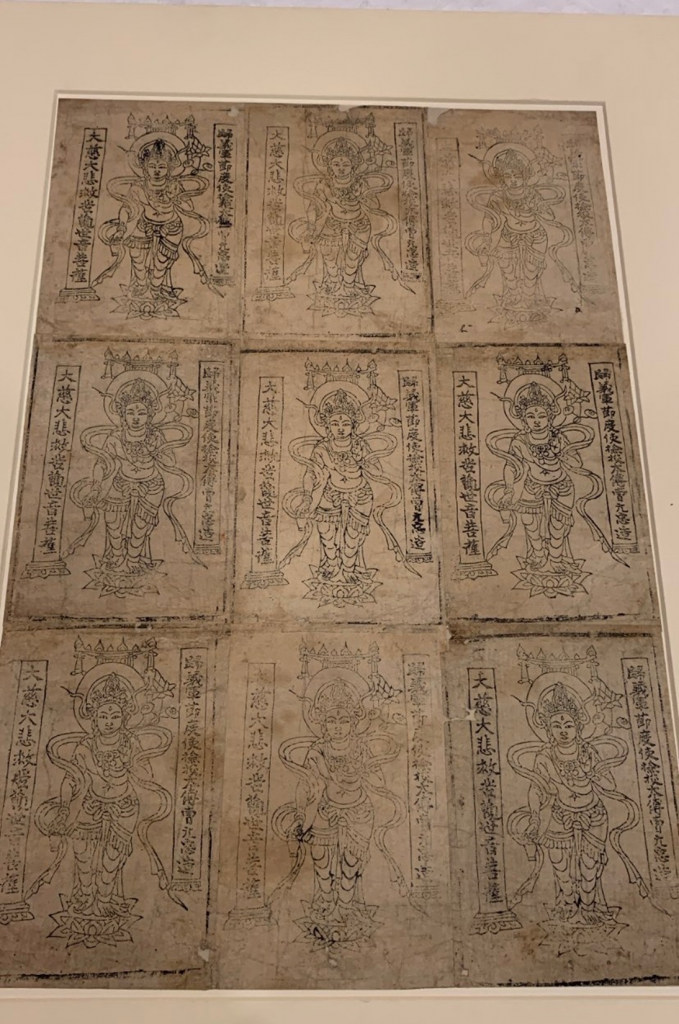
Prabhjeet Johal, PhD Candidate in the Department of Art History
Prabhjeet received a research travel grant this summer to visit numerous collections holding material objects stemming from Gandharan and Arsacid contexts. Visiting museums and libraries across Europe, she was able to gain access to and catalog hundreds of objects related to her interest in wine culture. Given many of these objects are scattered across Europe, seldom on display, or yet to be researched, her research allowed her to contextualize these objects and bring them into conversation with one another, in the service of her wider ambition to understand these objects in the context of their original cultures, whether Gandharan or Parthian.
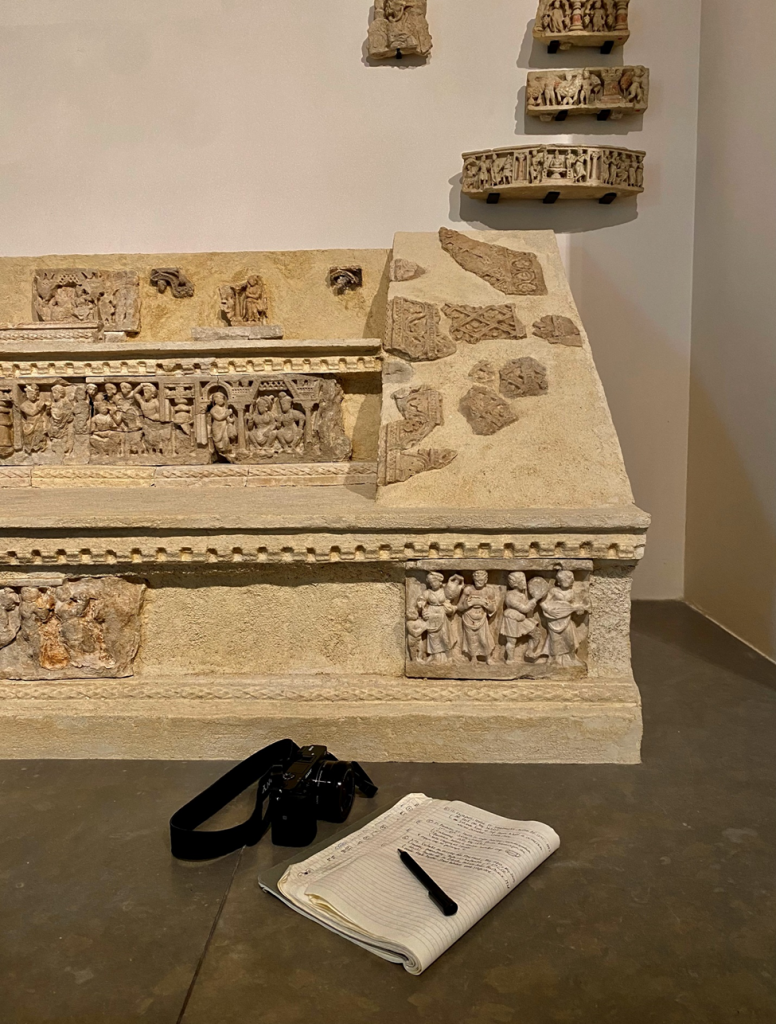
Ian Turner, PhD Candidate in the Department for the Study of Religion
Ian received a Buddhist Studies Research Traineeship for summer research travel and language training from the Ho Centre, for which he was hosted by the Central Department of Nepāl Bhāṣā, Tribhuvan University, Kathmandu. Notably, this is the only post-secondary institution devoted specifically to the study of Nepāl Bhāṣā anywhere in the world. For four months, he had the pleasure of meeting regularly with two instructors: Dr. Omkareshwor Shrestha, outgoing chair of the Department and specialist in ethnolinguistics; and Dr. Bajramuni Bajracharya, current instructor of general linguistics and specialist in traditional Newar Buddhist ritual and culture. With both figures, he was able to read works pertaining to his research focus on domestic religiosity, as well as to participate in the lively social and intellectual life of the department and local community.

Andrea Wollein, PhD Candidate in the Department for the Study of Religion
Andrea has been conducting dissertation research in the Kathmandu Valley for much of 2022, collecting primary source material in Tibetan that was only available in the Rigon Tashi Choling Monastery in Dakshinkali, Nepal. Due to an extraordinary coincidence (or as Tibetans might say, an auspicious karmic connection), a cycle of teachings related to Andrea’s research was edited for publication (in Tibetan) by Dakpa Gyatso Acharya, an affiliate of the Ho Centre for Buddhist Studies. Meeting with Dakpa over Zoom, Andrea thus had an extremely valuable and enjoyable opportunity to improve her Tibetan translation skills and ability to understand the contexts of the texts.
Welcome to Emaho! A Summer 2022 Conference Roundup
by Michael Ium
Emaho!
Welcome to Emaho! Reflections on Buddhist Studies in Toronto, the new blog for the Ho Centre for Buddhist Studies at the University of Toronto. My name is Michael Ium and I’m thrilled to be the first postdoctoral fellow jointly posted in the Department for the Study of Religion and the Ho Centre for Buddhist Studies.
“Emaho” is a putatively Sanskrit phrase used in Tibetan sources as an exclamation of astonishment or wonder. In this spirit, this blog is envisioned as a space to highlight all manner of activities that delight the senses and stimulate the mind, whether related to research, teaching, conference activity, public facing events, and/or Buddhist groups in Toronto.
For this first post, I will be sharing with all of you my experiences attending three international conferences this summer, following years of delays due to the pandemic.
The 16th Seminar of the International Association for Tibetan Studies (IATS 2022), July 3-9, Charles University, Prague, Czech Republic
After years of isolation and monotony, it was an exciting and timorous experience to fly to Prague for my first conference of the summer. Both emotions were rightly justified, as the conference was a hotspot for both professional activity and Covid-19 infections.
Although not able to attend in person, Professor Rory Lindsay gave a paper based in part on his work as an editor and translator for the 84,000 Project, which has partnered with the University of California, Santa Barbara’s Department of Religious Studies to establish the “Buddhist Texts Translation Initiative.” Dr. Lindsay’s talk focused on the Initiative’s translation of the Vajrasamādhi Sūtra, a translation headed by Professor José Cabezón at UCSB and joined by Toronto DSR alumna and PhD candidate at UCSB, Daigengna Duoer. This text was critical to the development of some Chan/Zen/Sŏn traditions, but had little impact in Tibet.
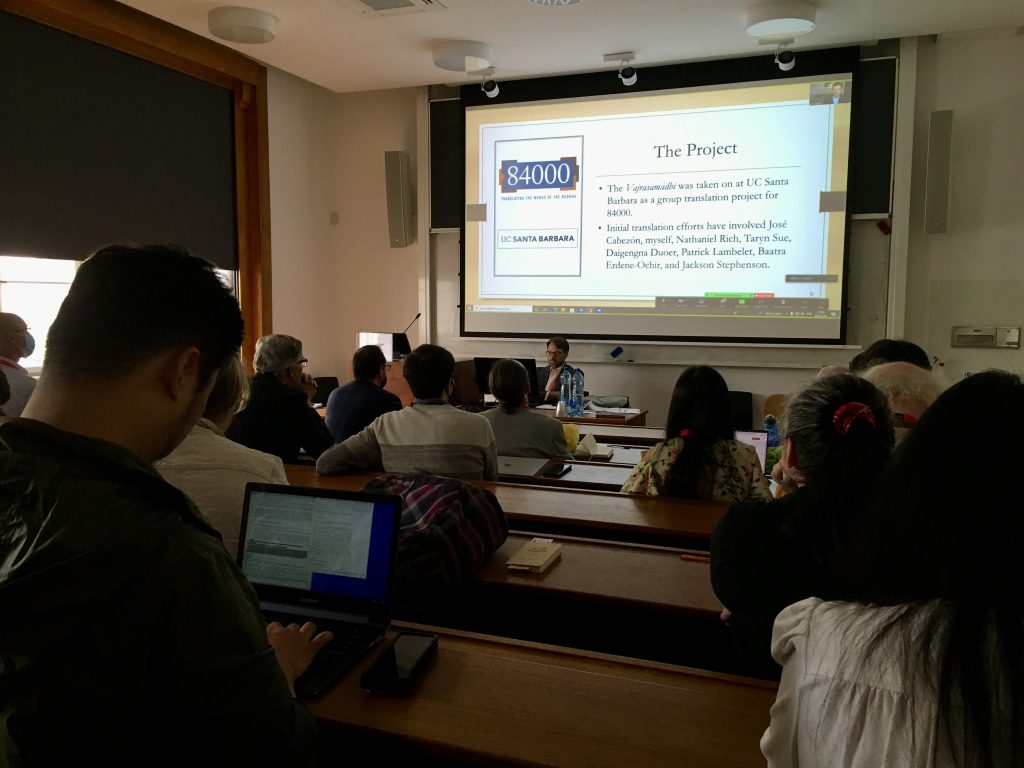
I myself presented a paper for a session on “Buddhist Histories,” based on one chapter of my dissertation. In it, I argue that Ganden Monastery in Tibet is not only a major pilgrimage site, but should also be considered a prototypical Gelukpa pilgrimage site, one that played a major role in the popularization of the Tsongkhapa cult in Tibet.
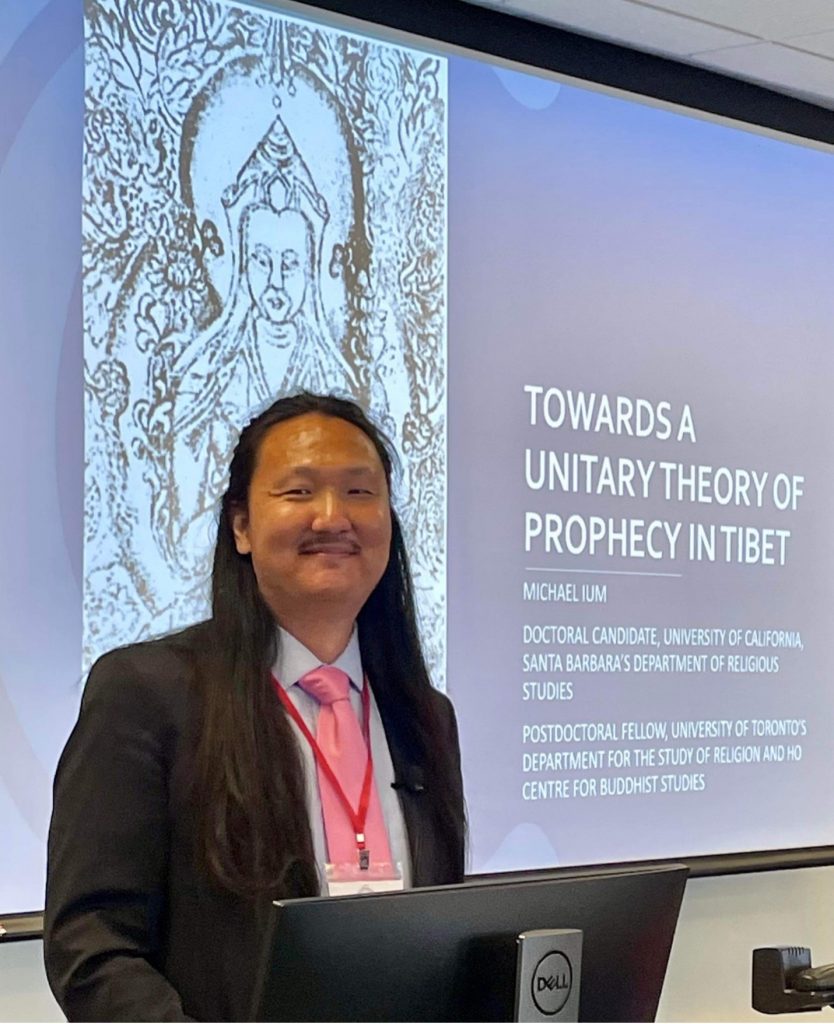
Lastly, recent DSR PhD alumna Annie Heckman also attended online and presented a paper based on her dissertation research into the creative work of the Tibetan scholar Butön Rinchen Drub on the vinaya tradition in Tibet for Buddhist nuns. The topic of full Buddhist ordination for nuns in the Tibetan Buddhist cultural sphere was also the topic of a lively special round-table organized on the spur of the moment in Prague, as full ordination for Tibetan Buddhist nuns was offered for the first time ever in Bhutan just two weeks before the conference began. According to two experts on Bhutanese religion, Dr. Karma Phuntsho and Dr. Dorji Wangchuk, this monumental event was made possible both by the extensive support of the Bhutanese ruling family (in particular the Queen Mother Tshering Yangdoen Wangchuck), as well as the relative autonomy offered by the fact that the Bhutanese sangha did not face the same internal conservative pressures as more public figures such as the Dalai Lama and Karmapa.
The Sixth International Seminar of Young Tibetologists (ISYT), August 1-5, University of Virginia, Charlottesville, United States
Geared to Tibetologists in the early stages of their careers and following a delay of one year, the sixth meeting of the International Seminar of Young Tibetologists took place this year at the University of Virginia. I presented a paper arguing for a unitary approach to understanding prophecy in Tibet that incorporates both textual and non-textual forms of prophecy. This topic may appear again as the focus of a potential symposium in the Ho Centre next year; stay tuned! Unfortunately, due to logistical issues Professor Rory Lindsay was forced to cancel his paper on the Tibetan Qur’ān, and in particular its use of traditionally Buddhist vocabulary. Annie Heckman was also in attendance with her lovely daughter Pema, as she has settled in the area as a translator for the 84 000 Project.
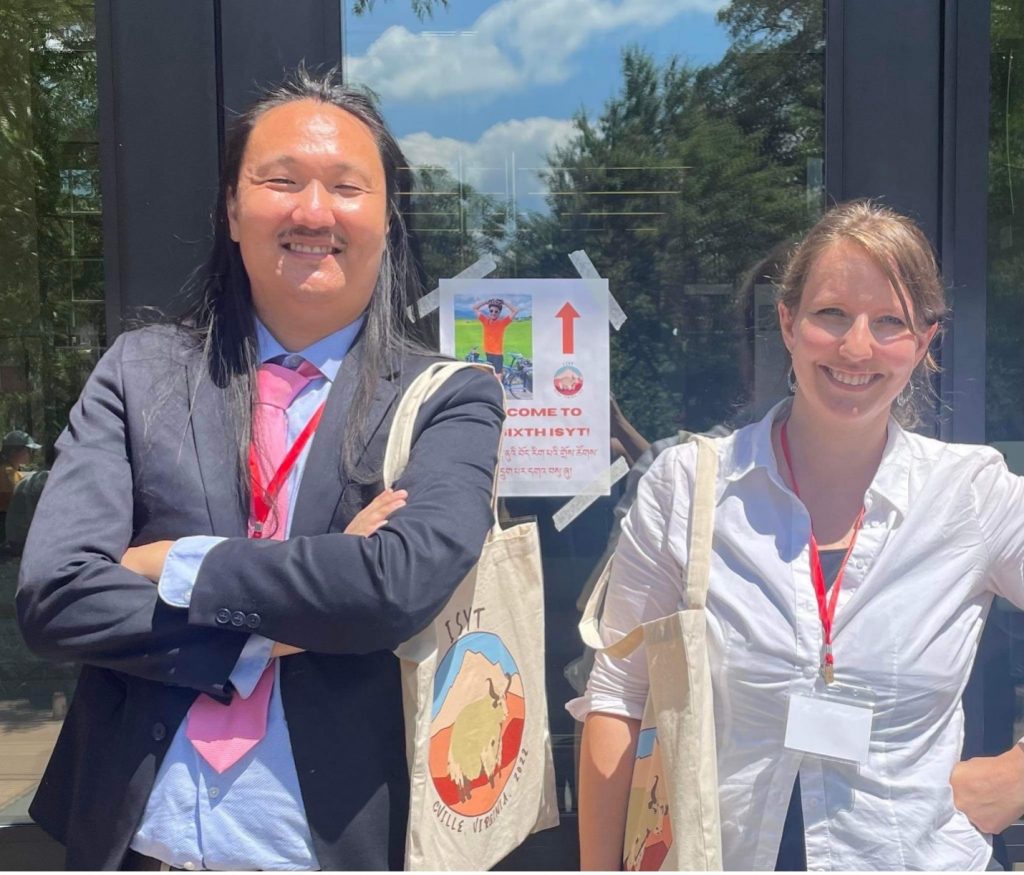
The 19th Congress of the International Association of Buddhist Studies, August 15-19, Seoul National University, Seoul, South Korea
Following a delay of two years, the 19th Congress of the International Association of Buddhist Studies was held successfully in Seoul this year, five years after the previous congress at the University of Toronto in 2017. This long-awaited meeting was attended by numerous members of the Ho Centre. Although unable to attend in person, Professor Christoph Emmrich presided over the boisterous General Meeting in his capacity as General Secretary for the IABS Board. He also convened a panel on “New Research in Newar Buddhist Studies,” with two of his students from the Ho Centre presenting. Ian Turner gave a paper imagining the house of the Newar Buddhist householder as “a place…at the ritual interface of substance and presence, the refuge of the human and the other-than human.” Austin Simoes-Gomes presented on the Newar practice of pūjā to the goddess Hāratī, based on his recent fieldwork in Kathmandu.
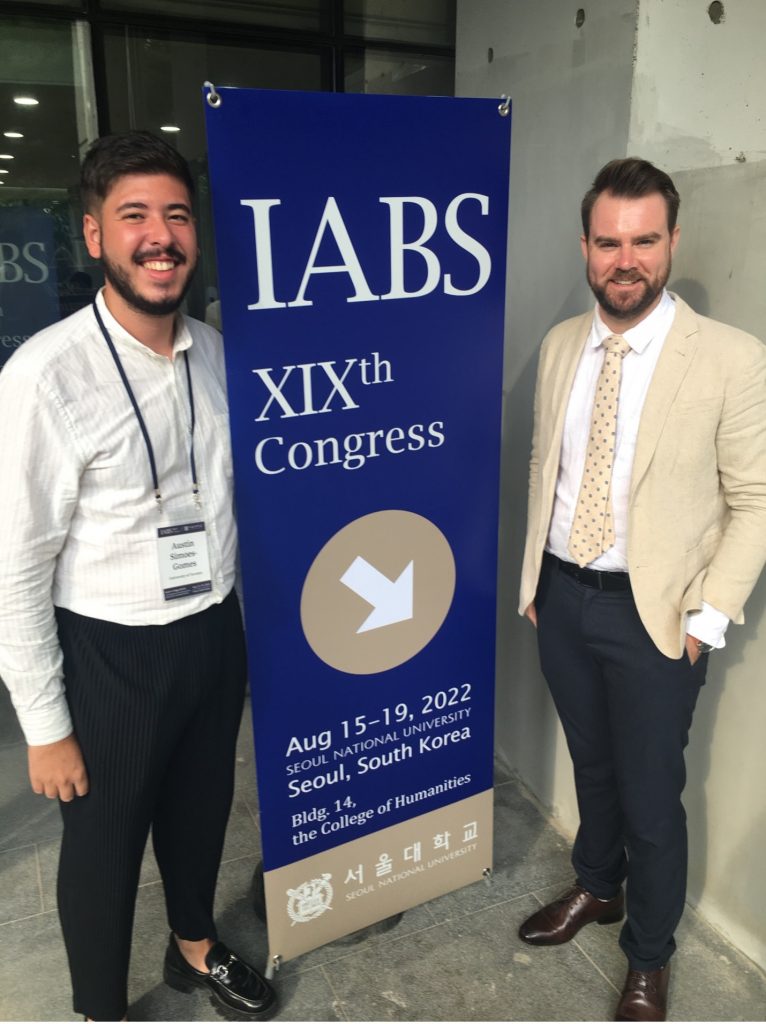
The Ho Centre was also well represented in the Section on Tibetan Buddhism. DSR alumna Daigengna Duoer presented on her dissertation research into Transnational Buddhism in Early Twentieth-Century Inner Mongolia and Manchuria. I myself presented a paper arguing for the importance of Tsongkhapa’s status as a mahāsiddha to the early patronage of the Gelukpa in Tibet.
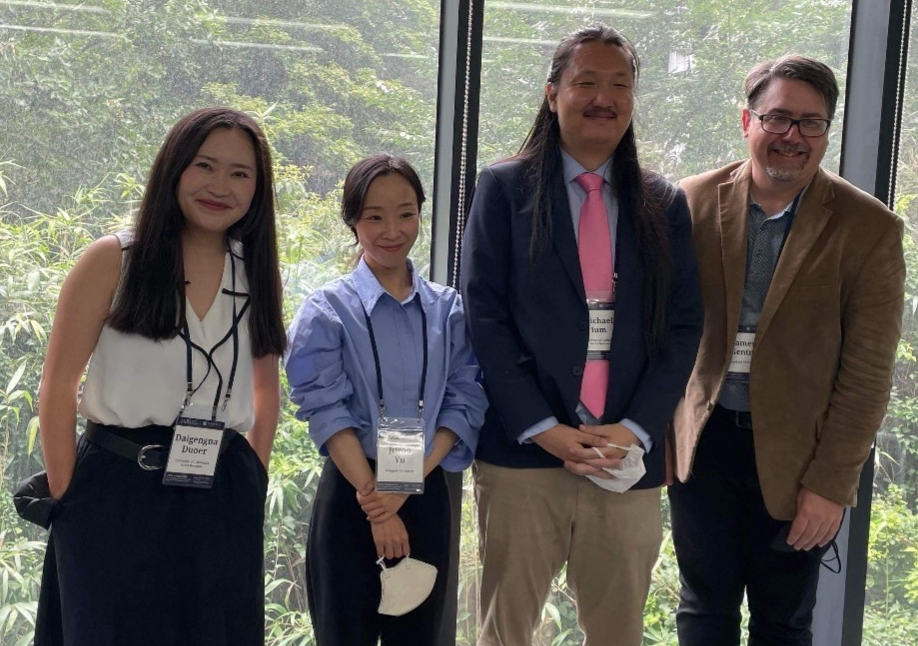
Professor Sarah Richardson convened a panel on “Wall Paintings in Buddhist Asia,” which sought to interrogate the relationship “between ‘elite’ circles of textual production and ‘popular’ domains of devotional practice” via the phenomenon of wall paintings. She also contributed a paper to this panel based on her research on the Tibetan monastery of Shalu, arguing that depictions of everyday people in narrative paintings at Shalu served to socialize lay visitors into particular “modes of behavior, devotion, or hierarchy.”
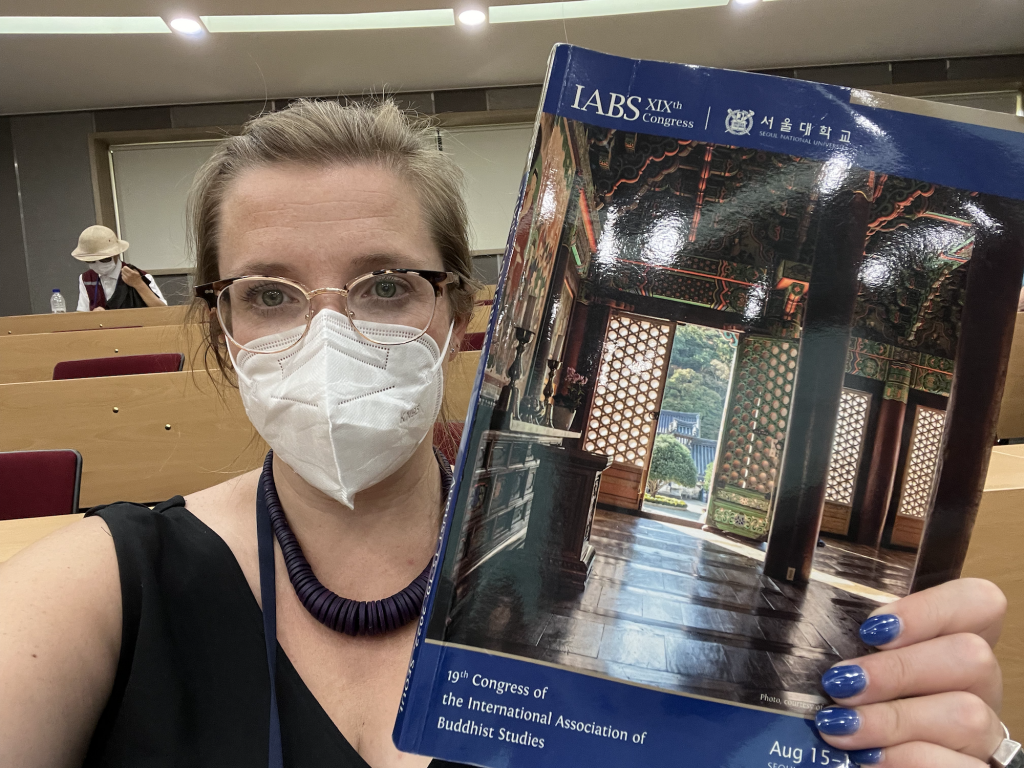
Dr. Sarah Richardson at IABS, Seoul National University, Seoul, South Korea 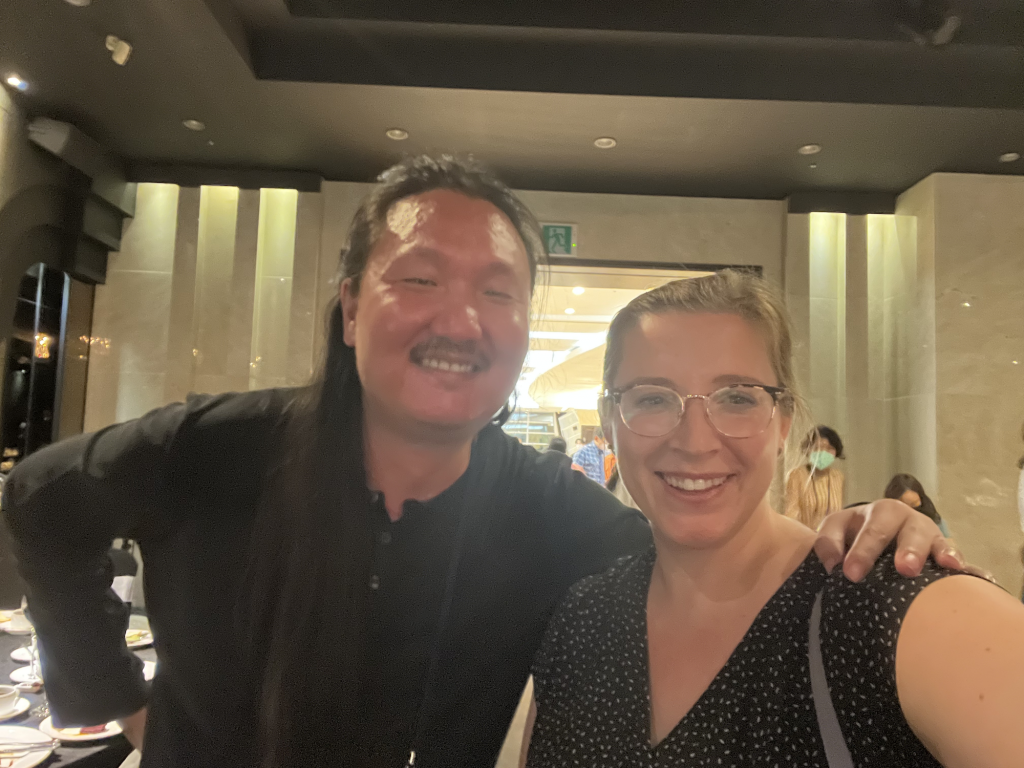
Michael Ium and Sarah Richardson at IABS, Seoul National University, Seoul, South Korea 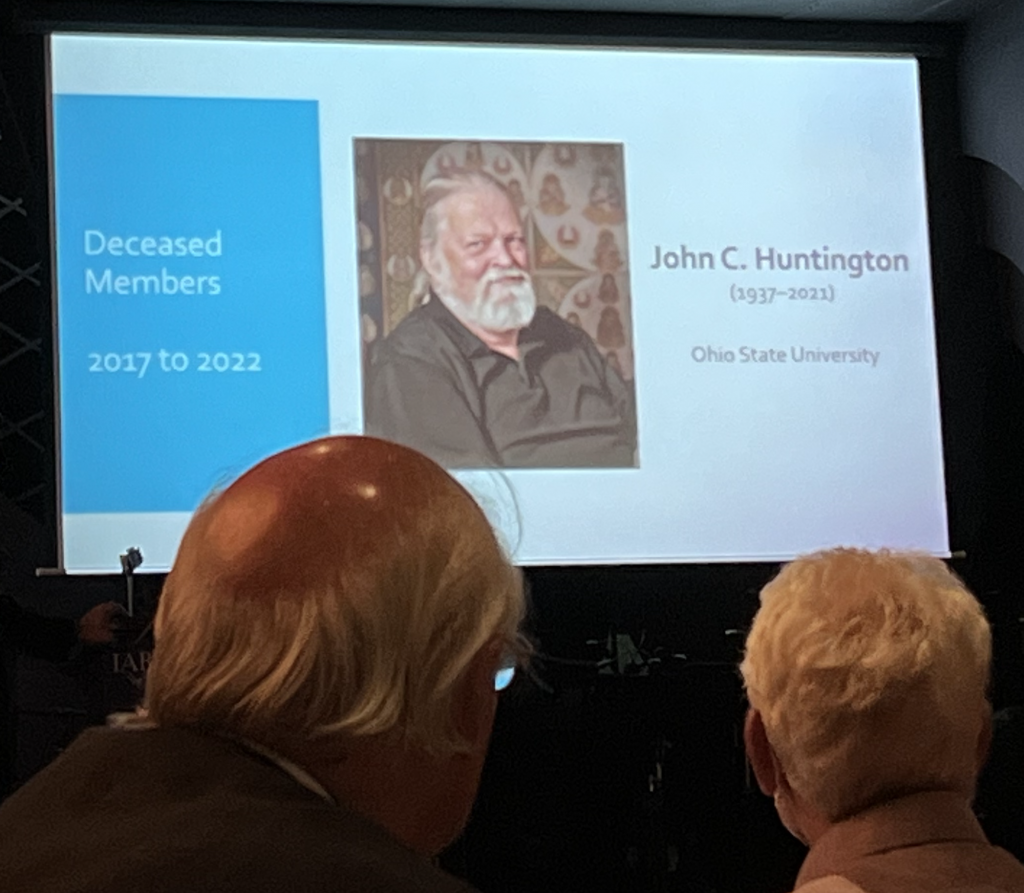
IABS conference attendees reflect on deceased members at the closing night dinner. Commemorated here is John Huntington who taught a long career at the Ohio State University.
Elsewhere, PhD Candidate Tony Scott co-convened a panel focused on the Milindapañha or Questions of Milinda, presenting a paper on one controversial commentary to this work in post-colonial Burma. He was also joined on this panel by Bryan Levman (DSR alumnus) whose paper focused on an examination of the origins of the Milindapañha by comparing the extant Pāli and Chinese works.

Finally, Rachelle Saruya joined the conference via Zoom to present a paper on modern Burmese Buddhism in the section for Gender in Buddhism. Based on her ethnographic research in both Myanmar and the San Francisco Bay Area, she argues that it was Burmese Buddhist women who created much of the demand for Abhidhamma philosophical teachings, arguing that “we need to pay more attention to the often ‘invisible women’ that create change, but are subsumed under the monk author or teacher.”
Lastly, for me, one of the highlights of the Congress was an informal dinner that brought together numerous current and former members of the Ho Centre for a night of nourishing Korean food and drink, and collegiality!
Emaho!
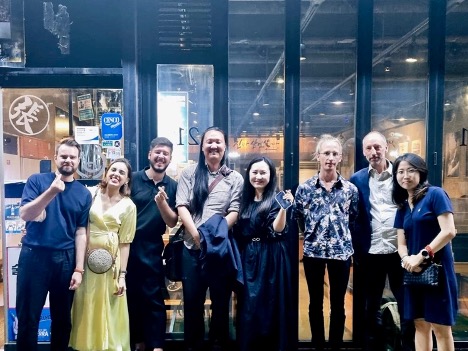
(From left to right: PhD Candidate Ian Turner; incoming DSR Postdoctoral Fellow Alana Souza; PhD Candidate Austin Simoes-Gomes; Postdoctoral Fellow Michael Ium; alumna and UCSB PhD Candidate Daigengna Duoer; Anthony Fiorucci (Uppsala University); Patrick Lambelet (UCSB); alumna and current UCSB Master’s student Euiyeon Kim).
